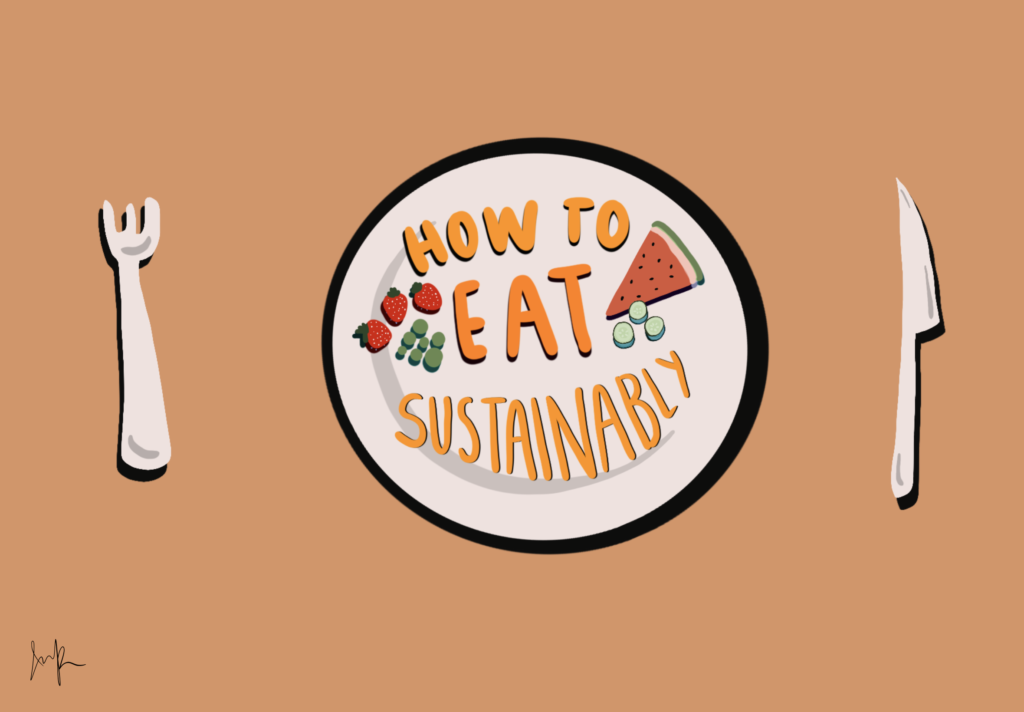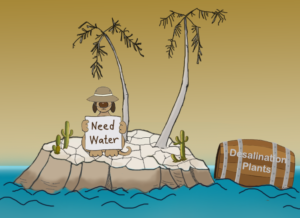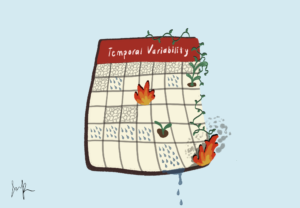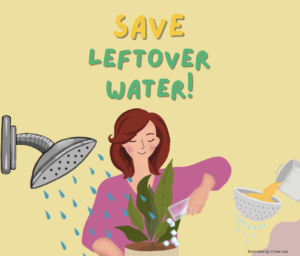
Food is communion. Food is comfort, identity, joy, nutrition, and energy. Food varies across traditions, customs, and individual identities. Food brings together distinctive backgrounds, and has shaped history since the beginning of mankind.
With our population exponentially growing, it is necessary to ensure we are maximizing our resources to produce enough food for the 10 billion people estimated to be living on our planet by 2050. Yet food waste is also an increasingly concerning problem as nearly 40% of all food produced goes uneaten. The majority of this waste ends up in landfills, contributing to climate change through methane emissions.
Despite the vast amount of food that goes to waste, malnutrition is still a critical issue. According to the World Health Organization, nearly 462 million adults are underweight while an estimated 1.9 billion are overweight or obese. The current food distribution methods are inadequate to provide the growing population with nutritious and healthy food.
Even worse, our global food systems are contributing to climate change. Food production alone contributes to about 30% of our greenhouse gas emissions. In fact, “agriculture is the largest cause of global environmental change” (Harvard T.H. Chan, 2019). Land usage, product distribution, methane from livestock, and other sources of energy consumption account for 39% of total emissions in the agriculture sector. As the population continues to grow exponentially, we can only expect the food production related emissions to follow the trend. Furthermore, as food goes through the supply chain, processing, packaging, and refrigeration, more waste and emissions are generated (Our World in Data). According to the UN, the food related retail sector has grown four-fold in the past three decades, and refrigeration is responsible for half of the energy consumed in the process.
Following production, consumption also generates its fair share in environmental degradation. In addition to emissions generated in delivery, preparation, and cooking, food waste releases a metric buttload of methane. According to the USDA, “U.S. food loss and waste embodies 170 million metric tons of carbon…(excluding landfill emissions) – equal to the annual CO2 emissions of 42 coal-fired power plants.” In addition, a report by the EPA explains that food waste is the most abundant material in landfills and incinerators in the US.
Given the adverse and irreversible consequences an inefficient global food system could have on the planet, it’s crucial that we approach food differently, from production to consumption. So, here are some ways YOU can take action at the individual level.
- Eat your vegetables.
While you may be picking out the broccoli on the dinner plate, eating vegetables and fruits with low production emission levels is a sustainable method to reduce your impact on the planet. Unlike livestock, many vegetables and plants such as onion, potatoes, or apples require much less energy and generate less emissions. Try moderating your meat intake and try a plant-based/vegan/vegetarian diet instead.
- Don’t waste what’s on your plate.
Nearly 40% of all food is wasted in America, which is 199 billion pounds a year. About 40% of household food is wasted and shockingly 60% of commercial food in the processing or restaurant is wasted. If you feel like you can’t finish your meal, don’t cook all of it in the first place. In the restaurant, order what you can eat or bring your left overs and finish at home.
- Prepare ahead of time.
If you struggle with minimizing food waste, try meal-prepping. Keep it simple and plan
your meals out ahead of time. This way, you’ll know exactly what to buy on your next trip to the grocery store without over-purchasing or impulsive spending.
- Store foods properly
The FDA suggests temperatures below 40 degrees Fahrenheit for food storage. Another
tip is to utilize the freezer! The freezer can store foods for a long time before they go bad. Invest in some reusable airtight containers.
- Look for these certifications.
- Food Justice Certification
- Fair Trade USA or Fair Trade International
- Naturland Fair
- Regenerative Organic Certification
- USDA Organic
- Demeter Biodynamic
- Rainforest Alliance
- Animal Welfare Certified
- Animal Welfare Approved
- Certified Humane
- Certified Grassfed
- Try everything.
Eating with more variety is important to preventing the diversity in our agriculture from
Decreasing. According to WWF, twelve plants and five animal species make up 75% of the world’s food supply. Low diversity in food threatens food security and is detrimental to nature.
- Sea the Better Food Options
Overfishing and aquaculture have negative effects on our environment. Luckily, there are
ways you can eat seafood more sustainably. While trying a diverse range of seafood is sustainable, it’s also recommended to lean towards climate friendly options. For example, wild-caught pelagic fish, shellfish, or wild-caught pink salmon generate the least emissions and have sufficient nutrition.
- RSPO Certified Palm Oil
Palm oil is sourced sustainably, responsible for mass deforestation and habitat degradation. Avoid unsustainable palm oil products, and instead, search for RSPO certified sustainable palm oil.
- Season-ally
Purchase foods that are in season. Avoid choosing food that has to travel long
distances. Instead, take a look at this seasonal food calendar.
- Be aware and spread the word.
No one can be perfect and completely eliminate food waste and emissions. However, making everyday choices that add up to creating a more sustainable food community can make a huge difference. Use the knowledge you just gained to better your decisions and let the people around you know how much of an impact their plate makes on this world.
Works Cited
Dmizen. (2018, May 11). Six tips to help you eat more sustainably. WWF. https://www.wwf.org.uk/updates/six-tips-help-you-eat-more-sustainably
EPA. (2021, November). From Farm to Kitchen: The Environmental Impacts of U.S. Food Waste. https://www.epa.gov/system/files/documents/2021-11/from-farm-to-kitchen-the-environmental-impacts-of-u.s.-food-waste_508-tagged.pdf
Food systems account for over one-third of global greenhouse gas emissions. (2021, March 11). UN News. https://news.un.org/en/story/2021/03/1086822
Food Waste and its Links to Greenhouse Gases and Climate Change. (2022, January 24). USDA. https://www.usda.gov/media/blog/2022/01/24/food-waste-and-its-links-greenhouse-gases-and-climate-change#:~:text=EPA%20estimated%20that%20each%20year,42%20coal%2Dfired%20power%20plants.
Harvard T.H. Chan. “Food Waste.” The Nutrition Source, 2023, www.hsph.harvard.edu/nutritionsource/sustainability/food-waste/.
Harvard T.H. Chan. (2019, January 17). Sustainability. The Nutrition Source. https://www.hsph.harvard.edu/nutritionsource/sustainability/
How much of global greenhouse gas emissions come from food? (2021, March 18). Our World in Data. https://ourworldindata.org/greenhouse-gas-emissions-food
Staff, A. (2017, November 20). 5 tips for sustainable eating. The Nutrition Source. https://www.hsph.harvard.edu/nutritionsource/2015/06/17/5-tips-for-sustainable-eating/
Top 11 Tips for Sustainable Eating. (2019, April 22). The Plant Powered Dietitian. https://sharonpalmer.com/top-11-tips-for-sustainable-eating/
United Nations, Department of Economic and Social Affairs, Population Division (2017). World Population Prospects: The 2017 Revision, Key Findings and Advance Tables. Working Paper No. ESA/P/WP/248.
United Nations. (n.d.). Food Loss and Waste Reduction | United Nations. https://www.un.org/en/observances/end-food-waste-day
WWF. (n.d.). Eight tips to eat more sustainably. WWF. https://www.wwf.org.uk/betterbasket
The views and opinions expressed are those of the authors and do not necessarily reflect nor represent the Earth Chronicles and its editorial board.









